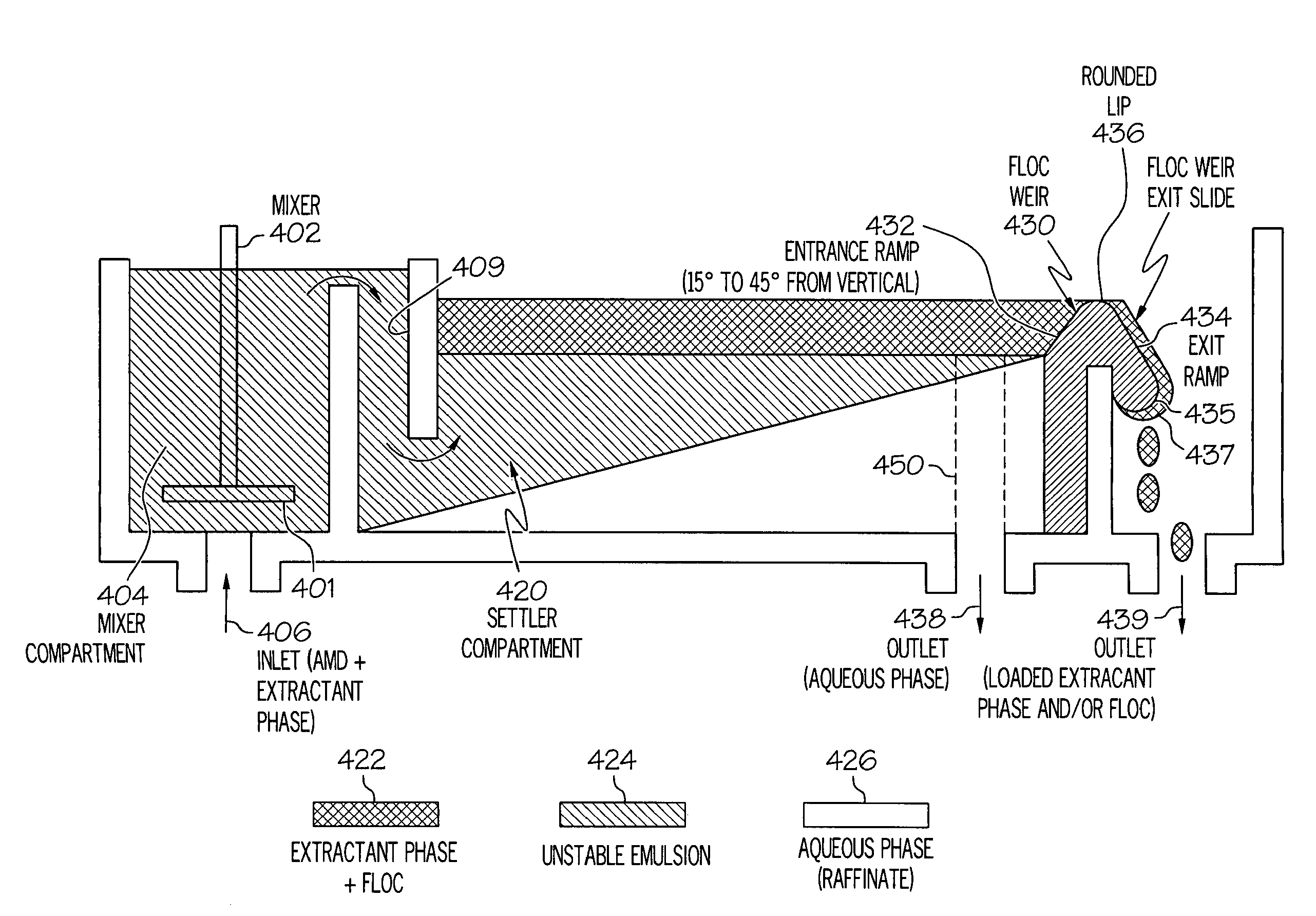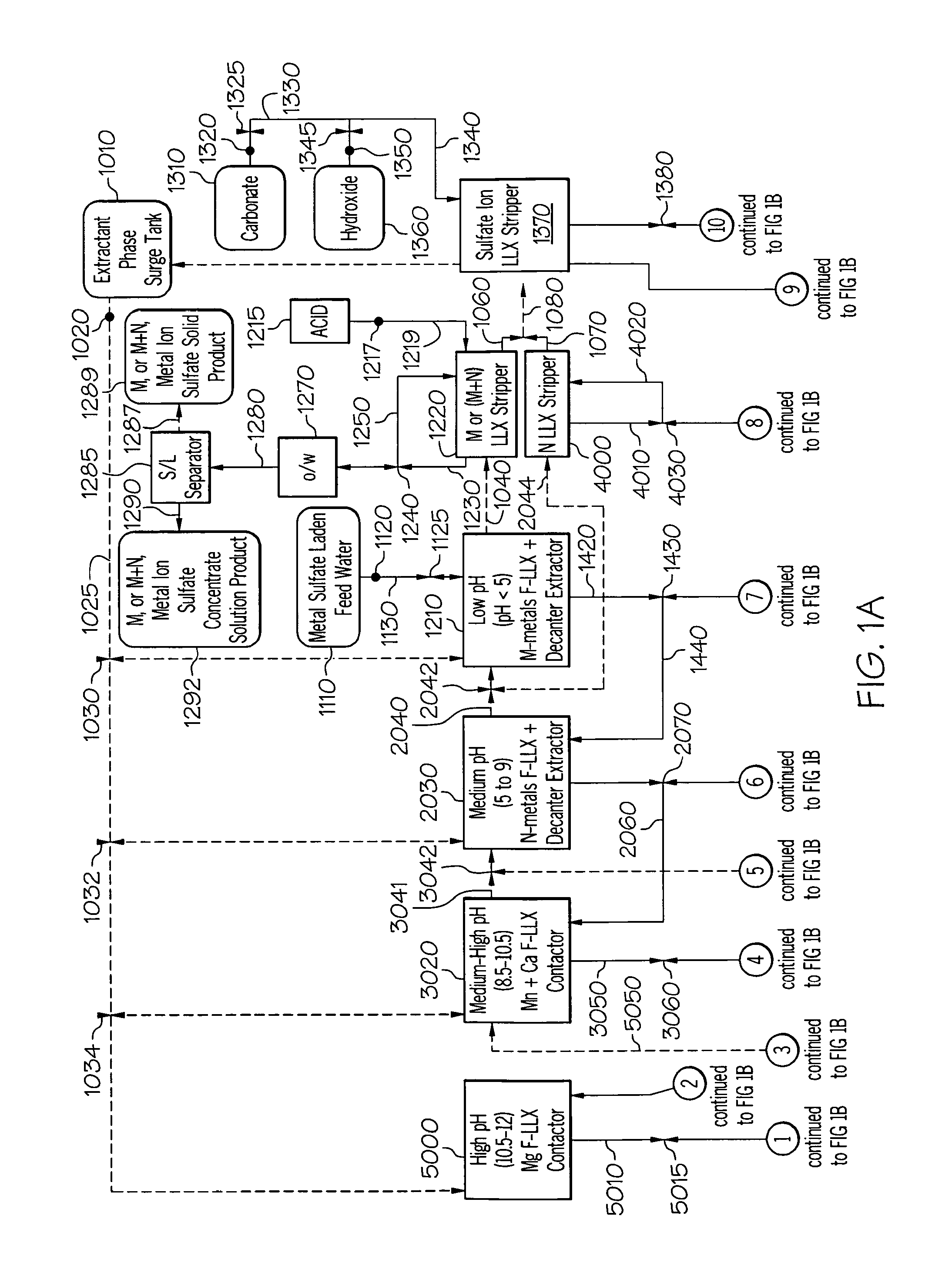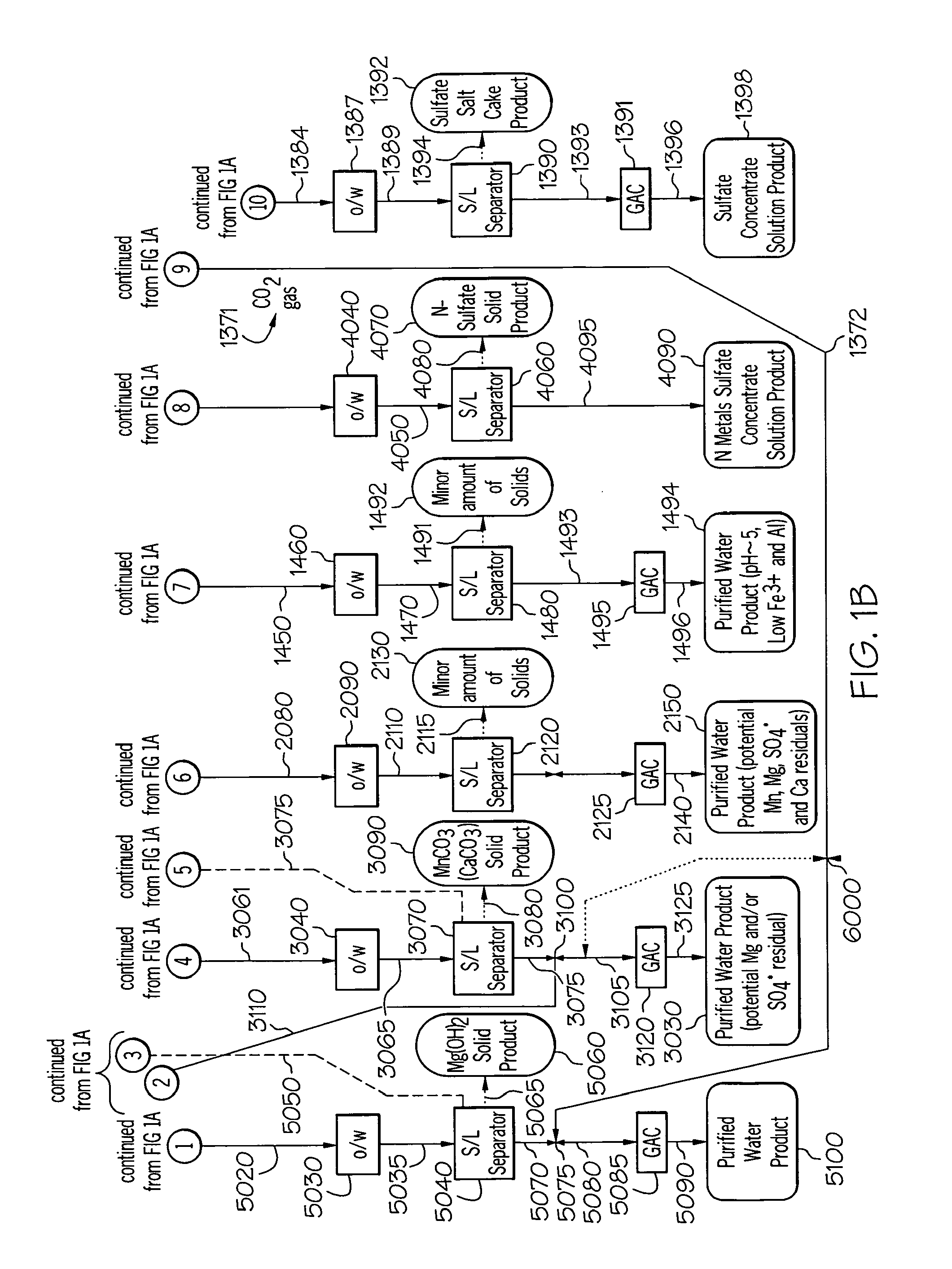Water purification
- Summary
- Abstract
- Description
- Claims
- Application Information
AI Technical Summary
Benefits of technology
Problems solved by technology
Method used
Image
Examples
example 1
[0291]The objective of this test was to determine the key parameters and ranges necessary for a successful removal of contaminants from acid mine drainage water and accomplishing the separation of the recovered components while forming them into concentrates. The process configuration in FIG. 13 was constructed using clear chemical resistant PVC (CPVC) for the mixer-settler tanks, which had had an internal mixer volume of 186.7 cm3 and an internal settler volume of 401.5 cm3. The flow rate used resulted in a 333.6 second residence time. Clear Tygon tubing (0.25″ I.D.) was used for the piping. Cole-Parmer Instrument Company Master-flex L / S Peristaltic pumps and Dayton AC-DC series motor mixers were used. The extractant solution formulation was prepared using 15% Aliquat 134, 15% Exxon 10 (Isodecanol), and Calumet 400-500. All test conditions are given in the LLX Test Condition Key.
[0292]The process was started up, operated, and shut down in the following manner.
[0293]At start-up, the...
example 1a
Stages Determination
[0301]This example determined the effect of sulfate extraction efficiency using extractant phase formulation. The apparatus of FIG. 13 was constructed. The extractant phase was prepared by selecting components from Table 3, and certain components of these were selected and blended in proportions given in Table 5. The test conditions used are given in Table 5.
[0302]The experiment used extractant solution from Table 5 to extract sulfate from 2000 ppm Na2SO4 solution. Since the extraction of sulfate anions in a Na2SO4 solution rely mainly on a concentration gradient, this set-up served as “worst case” in sulfate anion removal of water purification process. The extractant solution was treated with 15% Na2CO3 to load up the extractant with carbonate anion, and then the extractant and Na2SO4 solution were tested under different E / A ratio. The aqueous phase was analyzed using ion chromatography to determine the remaining sulfate concentration. The ion chromatography res...
example 2
Run #2
[0304]This example determined the effect of metal and sulfate extraction efficiency in a less contaminated stream using extractant phase formulation. The apparatus of FIG. 14 was constructed. The extractant phase was prepared by selecting components from Table 3 blended in proportions giving in Table 5. The test conditions used are given in Table 5.
[0305]This experiment used extractant solution from Table 5 with process apparatus of FIG. 14 to perform water purification process with an acid mine drainage stream containing low contaminant levels. The process was set up with the same number of extracting and stripping stages. The combination of high extraction efficiency of metal cation and sulfate anion and the low contaminant concentration in the acid mine drainage stream caused secondary emulsion at the third extraction stage. The emulsion also stopped phase disengagement between extractant solution and the raffinate. The extractant solution and raffinate emulsion created fro...
PUM
| Property | Measurement | Unit |
|---|---|---|
| Percent by mass | aaaaa | aaaaa |
| Angle | aaaaa | aaaaa |
| Weight | aaaaa | aaaaa |
Abstract
Description
Claims
Application Information
 Login to View More
Login to View More - R&D
- Intellectual Property
- Life Sciences
- Materials
- Tech Scout
- Unparalleled Data Quality
- Higher Quality Content
- 60% Fewer Hallucinations
Browse by: Latest US Patents, China's latest patents, Technical Efficacy Thesaurus, Application Domain, Technology Topic, Popular Technical Reports.
© 2025 PatSnap. All rights reserved.Legal|Privacy policy|Modern Slavery Act Transparency Statement|Sitemap|About US| Contact US: help@patsnap.com



